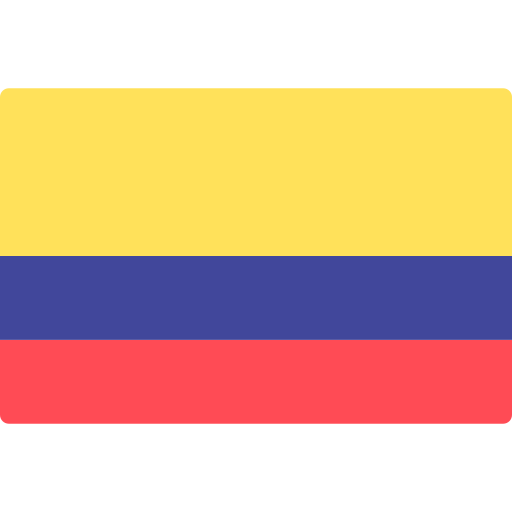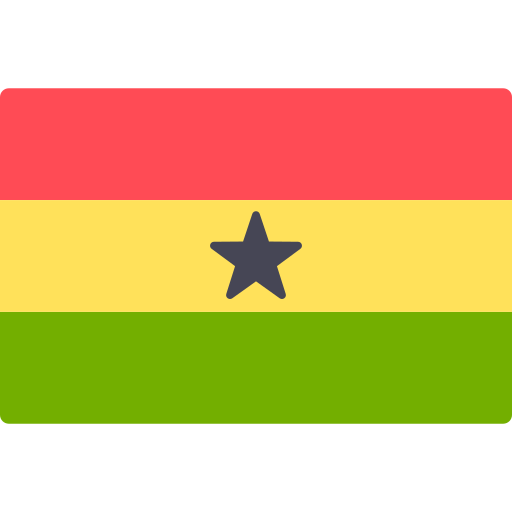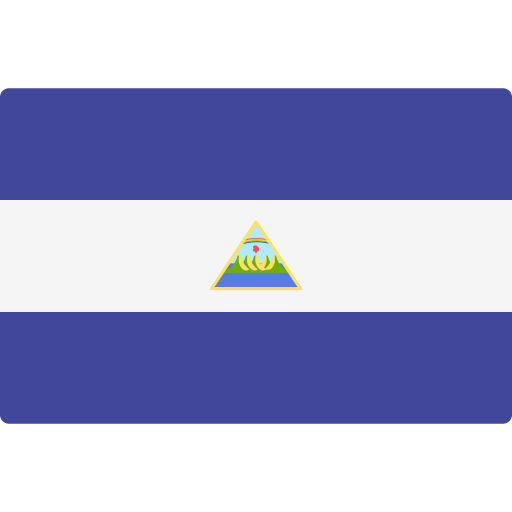Here, they share the creative work that goes into bringing David Lynch’s unique, wild and vivid sonic visions to life, that ‘David Lynchian’ sound, the role of the sound designer, the key to good sound (and the importance of silence) + lots more.
So grab yourself some damn good coffee & cherry pie for the story on a director and team that really pushes the limits for sound:
Written by Jennifer Walden, images courtesy of Showtime. May contain spoilers.
The season finale of Twin Peaks: The Return has recently aired on Showtime and it left me with so many questions. Luckily, sound supervisors/re-recording mixers Dean Hurley and Ron Eng — who have been and continue to be the technicians of David Lynch’s soundscapes, were kind enough to answer those about the sound.
Here they give us a peek behind the red curtain into the brilliant/mad world of David Lynch — an undeniably skilled storyteller who’s mastery of sound is evident in his unique application of it.
 Mix stage crew pictured left to right: Ron Eng (Re-recording Mixer), Luke Gibleon (Sound Editor), Dean Hurley (Re-recording Mixer) and Xiao’ou Olivia Zhang (Apprentice Sound Editor).
Mix stage crew pictured left to right: Ron Eng (Re-recording Mixer), Luke Gibleon (Sound Editor), Dean Hurley (Re-recording Mixer) and Xiao’ou Olivia Zhang (Apprentice Sound Editor).
Post-production sound crew not pictured: Willard Overstreet (Sound Editor/Supervising Foley Editor), Kerry Williams (Dialog Editor), David Cohen (Dialog Editor), Dan O’Connell & Richard Duarte (Foley), and Dana Frankley (Assistant Sound Editor)
Dean, you’ve been working with David Lynch for a while…
Dean Hurley (DH): Yes and so has Ron [Eng] but I’m more of a permanent fixture, maintaining his studio on a day-to-day basis.
What’s it like to work for David Lynch? Is it completely surreal?
DH: It’s completely surreal.
Ron Eng (RE): It’s always fun working for David.
Many directors say they’re going to be very involved with sound but when it comes time for the final mix they get pulled away for color timing, meetings, etc., leaving the mix crew and sound team to do a good portion of their notes without the director present. David always allows time for him to mix as much as he wants. He’s definitely involved with sound.
There aren’t many people in the world who have a style of sound associated with them. There’s that ‘David Lynchian’ sound…
DH: That’s true.
David has made an incredible world for the ears. He started out on Eraserhead (1977) making sounds himself because he couldn’t find what he wanted in the library
That’s also what makes the job fairly fun and interesting because you’re going into someone else’s established palace of sonic ideas and distinction.
It allows people like Ron and I to play in that world. David has made an incredible world for the ears. He started out on Eraserhead (1977) making sounds himself because he couldn’t find what he wanted in the library.
This new season of Twin Peaks is 18-hours long. That’s a lot of material to get through. When did you start work on this project?
DH: I don’t remember specific dates and times because I’m up here full-time and so everything just bleeds together. Ron came on in the process around the time post sound would typically start, but I was working on the series during the picture editing process, supplying the picture editors with sounds that weren’t just temp sounds.
RE: Right, I came on just after Labor Day I think.
DH: That whole process was beneficial and that’s the preferred way to work. Actually, when Ron finished Twin Peaks he jumped onto Longmire in the same capacity that I was engaged in for the earlier work on Twin Peaks. He jumped on while they were still picture editing, and he was servicing sounds to the picture department. If there’s one thing that we would love to get across, it’s that this is how an ideal transition happens, getting sounds in there during that formative process of when the picture is still coming together.
This is how an ideal transition happens, getting sounds in there during that formative process of when the picture is still coming together.
RE: I usually try to get involved early in the film editorial process on any project I’m supervising —cutting scenes and providing sounds for the picture crew. Filmmakers who are willing to allow the sound team to start early, as they did on Longmire and Twin Peaks, find it super beneficial because you are getting quality sounds in front of the picture editors and the directors. Everyone can listen to the sounds and get used to them so that there aren’t any surprises when you get to the dub stage, and suddenly they’re hearing all of your work for the first time. This happens more often than not.
[tweet_box]Behind the weird, wonderful sound of ‘Twin Peaks: The Return’ – with Dean Hurley and Ron Eng[/tweet_box]
DH: That’s why I have a full-time job here at David’s studio. That’s why David owns his own dubbing stage. When he’s working on projects throughout the year, he’ll be cutting picture in his room and he’ll call up to me and ask for something very specific. Then, that gives me the ability to send some candidates down for him to decide on in that defining moment when he is first marrying a sound to an image. It’s great to have the opportunity to present the best possible sounds at the earliest possible stage.
RE: We run into demo love all the time. You get the creative people who make the decisions falling in love with the temp sounds. Sound editors just cringe listening to some of the stuff that the creatives are in love with. And it’s hard to pry it out of their ears, so to speak.
DH: This is usually not the case with David. There can be an overcompensation in some other people’s work, where they are piling in material early on because they feel they need it for someone to be able to watch a cut.
When you choose to put a sound in there, it will forever change it. Your mind might not have the opportunity to unhear it
But, it’s a delicate thing. When you choose to put a sound in there, it will forever change it. Your mind might not have the opportunity to unhear it. David will even wait and try specific things on the dub stage. It’s a fluid process that could be a cool way of working for other people if they adopted it.

Ron, since Dean and David had already started working on the sound for Twin Peaks when you jumped in, did you feel overwhelmed? Or, did you feel as though your role was more defined because they had already started on it?
RE: I had been talking with Dean for months prior to starting. We formulated a plan and had ideas and had a crew in mind. So, when I started it wasn’t like my first day on it.
The overwhelming part was that the series is 18-hours long. Both Dean and I have mixed with David before. In the past, to do a feature with him has taken months. Mulholland Drive we final mixed for nearly four months. So we were prepared for the worst on Twin Peaks, thinking it would probably take us 10 years to do. (LAUGHS)
No, it was great though. It turned out wonderful. When I first came on, we had all this stuff to work out: who was going to do what, board setup, signal flow…basically how the whole process was going to go. All of that worked out great. I couldn’t have been happier. In the end, the whole workflow was good. We cut and mixed 18-hours in six months. That was a monumental accomplishment, especially for a David Lynch project.
Composer Angelo Badalamenti, on creating the iconic theme music for Twin Peaks
How did you divide the mix? Who handled what aspects?
RE: I did the dialogue and Foley, and Dean did music and effects. There were overlapping areas, but that was the general division.
DH: There was a lot of overlap. We played tag-team and went back and forth between things. As we’re moving along, we typically have to make the music fader live because David sits beside us and he will sometimes ride volume on music in order to get it just right. He’s super particular.
We typically have to make the music fader live because David sits beside us and he will sometimes ride volume on music in order to get it just right. He’s super particular.
Sometimes he’ll ask for specific things, and Ron and I will go on a hunt for it. It’s kind of like a game show where Ron is playing something and I am playing something and David isn’t seeing who is doing what and he’ll say, “That one! That sound.” And it’s like, ah Ron won that round! It’s that kind of situation.
‘A large part of the show’s sonic identity has been defined by the space between sound effects and music. Sound and music supervisor Dean Hurley’s first installment of the library-style Anthology Resource series showcases his original ambient music contributions featured in the show’s very distinctive-sounding third season.’
Did David Lynch handle the sound design on the surreal moments? Or was it more of a collaboration where everyone threw in their ideas?
DH: The title “sound design” is very specific to David. It’s the reason why he’s traditionally been credited as the Sound Designer on most of his movies even when there are other sound practitioners involved in the process. That term “sound designer” was invented in the Bay Area at a time when the industry desired a more illustrious descriptor for the role of someone who shaped the sound of the overall soundtrack, and not just the sound effects. The “sound designer” handled all the sonic facets — the dialogue, the sound effects, even sometimes music and how they work together overall. So to David, the “sound designer” is essentially the director of the soundtrack, which is what he is on all of his films.
To David, the “sound designer” is essentially the director of the soundtrack, which is what he is on all of his films.
It can be confusing for some people because as Ron said, the director of a film might not even be there so you have people like the “sound designer” or the supervising sound editor who become the director of the soundtrack. That isn’t the case with us. David views “sound design” not as specifically designing unique sound effects but as the design of the entire sound experience for the film. So that’s the meaning of the title as it applies to his world.
Ron and I are just there to facilitate and paint-by-number when it’s required. We offer up ideas. We are just presenting sounds on a constant basis but the key creative filter is David. He knows ultimately how the sound needs to service everything and when it’s correct. His wealth of tools and knowledge on the subject is what makes it so freeing and fun to work within because a lot of times if you get stuck in a spot he will throw out specific ideas on how to try things to get out of that spot. So that’s the nature of how that works.
RE: David does have an open mind and listens to the things you present. In the end, he has a vision and he is going to mold you into that.
Popular on A Sound Effect right now - article continues below:
-
33 %OFF
-
44 %OFF
Is there a particular scene or sound that you created that you’re most proud of? And how did that sound come about?
RE: When I first got in there and we were working on the opening, we knew it was going to be there every week so I made some very soft wind and water whooshes using some sample libraries I had just purchased and my sound libraries. I presented those to Dean. One of the shots where we are approaching the big waterfall they had done some sound for but I had another idea. Working with Dean is so much fun because he’s always receptive to any ideas or suggestions. Sometimes David will like it and sometimes he won’t, and sometimes it all gets melted together. It’s not a traditional approach. Working with David is a different kind of workflow because he is so involved with everything we’re doing.
DH: I had an Avid on the dub stage so I was able to view dailies coming in and see what the requirements were going to be from a pragmatic standpoint really early in the process. I was always keeping up with dailies in order see what I would need to prepare for. So, there was a shot from a scene towards the end of the series where Cooper [Kyle MacLachlan] is waking up in the road side motel room alone after he’s been with Diane [Laura Dern] the night before. In the daily, production sound-wise there was something in that motel room, a room tone from an air duct that was very faint but it sounded like this harmonic, almost choral sound. You could hear only the faintest suggestion of it, but I thought it sounded very interesting.
That one sound ended up creating this room tone that we used in a ton of places because it was this music-esque room tone that was incredibly rich in mood
I comb filtered it to dial up the specific frequencies that would exaggerate the sound that the tone was harmonizing at. That one sound ended up creating this room tone that we used in a ton of places because it was this music-esque room tone that was incredibly rich in mood.
One thing that David has taught me through the years is that when he asks for a room tone he’ll often want a room tone that has a light degree of musicality to it. Through a lot of his different films he’s made room tones from organs and different pieces of slowed down music.
So zeroing-in on that sound from the dailies, we created this room tone that was used in a lot of places, like in Part 2 after Phyllis [Cornelia Guest] was visiting her husband Bill Hastings [Matthew Lillard] in jail, she walks out and talks to her lawyer George [Neil Dickson]. David was thinking about a music cue there but then felt it would be too much.
So we had that specific room tone there and we automated the comb filter parameters to have them start rubbing against each other to create more of an unsettling disharmony. When we finished that scene, David said it was great. I was so elated because we had just ‘scored’ a scene with sound effects. It functioned like music and it sounds like a very minimal musical cue but it was all created and all originated by production audio from dailies.
I was so elated because we had just ‘scored’ a scene with sound effects
That sound ended up being the foundation for the sound of the vortex that happened several times throughout the show. It can be heard as we travel across the ocean in Part 8 toward the Fireman’s residence. It’s also used in countless scenes when there is no music being used and you need that very subtle mood enhancement. It was, for me, the single most useful, multi-purpose sound discovered for the show.
If you’re in-tune enough with the material then there are clues everywhere. It’s in the DNA of the material that’s speaking to you of what’s there as opposed to willy-nilly, pulling things that just sound cool. It’s a unique opportunity when you can expand on the DNA of the actual material of the film and have that stuff be woven in throughout everything.

There’s another sound woven in throughout the show — this crackling, electric sound that ties many scenes and characters together. How did this sound come to be?
DH: That sound was described in the script. There were a bunch of sonic descriptors in the script that were described in words so well that you could almost hear them.
I think the electricity idea is something that David has been fascinated with for decades. When a sound like that is in the script I try to do my due-diligence and create something new because just searching through the library isn’t going to give us what we need. The library will inevitably have Jacob’s ladder zaps and goofy representations of electricity that wouldn’t have worked. So that sound was created but I don’t want to talk about it because if you knew what it was then the magic would just drip from it. Not knowing what it is, it’s the most evocative sound ever.
Through the years we’ve had a couple trial runs with electricity sounds. For example, on Inland Empire David had me put an electrical hum on a keyboard so that he could play it as an instrument. There has been a long-standing tradition of these experiments with electricity. So, we happened to stumble upon something for the show that fit the bill because it was a really wild sound, hairy and textural and unsettling and beefy. It seemed to be exactly what it needed to be.
Can you talk about the vocal processing on the characters in the Red Room? As the characters talk to Agent Cooper, it sounds like they’re talking backwards but not quite. How did you create that sound?
DH: Well, they are talking backwards.
RE: They are quite literally talking backwards.
DH: The one insight on that situation is that the process was established on the original series, and it was David’s way of getting this completely altered performance out of the actors. It’s pretty genius. He had the actors say their lines into a little Dictaphone. Then, he’d play that back in reverse and the actors would learn their lines in reverse phonetically, and then perform the scene with that phonetic reversal.
It was David’s way of getting this completely altered performance out of the actors
Then the dailies were reversed so that when the performance played it had that stilted, slurred speech quality. It removes some of the intention from their performance because they’re struggling just to get the phonetics of it right, to hit their marks in the words and have it be understandable.
When it’s reversed, some actors are better than others at it. Some can actually enunciate and have a very good phonetic memory and for others, when the takes are played forward, it’s completely unintelligible. Like, what the hell are they saying?
If they were missing the intelligibility mark, she had this toolbox of vowels and consonants that would help us rescue that performance and make it a little more intelligible
We had an apprentice on the show named Olivia Zhang and she went through and made a library of syllables and consonants for every single character who spoke backwards so that if they were missing the intelligibility mark, she had this toolbox of vowels and consonants that would help us rescue that performance and make it a little more intelligible.
I don’t think anyone has ever had that problem to get through. It feels like a very unique situation…though I guess you could say this is precisely the type of thing that great dialogue editors do with regular dialogue.
It seems like a very David Lynchian situation. What about the sound of ‘the Arm’ in Part 2?
DH: Some of the electric sounds, like that one there, we were calling ‘charged air’ because it’s like that sound you hear when you stand under power lines. It’s like a sizzling crackle. That sound became its own little motif as well…it usually preceded the beefier, more characteristic electricity sound.
That electric sound was actually electricity, a real power line sizzle that was recorded in Poland during David’s production for Inland Empire. I had just gone out field recording and I remember the snow had fallen, and it was this super quiet, desolate area and I’m standing under these power lines that were so loud because of all of the sound dampening that the snow was providing. It was such a prominent sound for the environment and it was easy to record.
David loves that sound and we’ve used it a bunch of times. But that is specifically what that sound is.
Let’s talk about the explosion during Part 8. My big question is, “Whaaaaaaaaaaat?” Is there anything you can share about that, sound-wise?
DH: That whole sequence is largely an example of us doing next to nothing. ‘Us’ as in Ron and myself. That whole thing is driven by that predominant music cue, Penderecki’s Threnody to the Victims of Hiroshima, though there are some sounds enhancing the sequence. Penderecki, who has been used by Kubrick and many others, has such a unique relationship to music that some of his compositions have this wild instruments-as-sound effects approach. That is what made that scene. It’s a sonic experience, but it was a licensed music track.
It’s the sonic equivalent of just absolute crazy, emotionally-charged violence
David used a lot of Penderecki in Inland Empire and some in Wild at Heart. He’s had a long-standing love of that music. I feel like that is what he reaches for when he wants things to be on 11. It’s the sonic equivalent of just absolute crazy, emotionally-charged violence. What that composer was able to get out of orchestras is just like the most genius sound design ever.
https://www.youtube.com/watch?v=H_GbL3SwFwc
A trailer for the original Twin Peaks seasons one and two
We talked so much about sound but a big part of the sound of Twin Peaks: The Return is silence. There are so many moments with just interesting tone and very specific Foley or specific sound effects. Can you talk about the role of silence in the show?
DH: This is a good opportunity to talk about the Foley team. There was a scene that we loved with the junkie mom….
RE: The scene with the junkie mom, yeah. One of my jobs on this show was handling the Foley. In my experience of working with David in the past, Foley has always been a huge issue with him. If there is even one small sound in Foley he doesn’t like, he will toss out the entire Foley session. He will say, “Don’t ever play that for me again.” And if you say, “We’re going to play some Foley,” he will say, “No, I don’t want to hear it.”
I’ve had this experience with him in the past and so I knew going into this project that if we were going to get any Foley played then we definitely needed the best. So the guy I use in these situations is Dan O’Connell of One Step Up, who has a studio on the FOX Studios lot. He not only has great sync but his Foley is really creative and expressive.
I knew going into this project that if we were going to get any Foley played then we definitely needed the best
There was this moment when the junkie mom is sitting at a card table and she’s preparing to take a pill. The scene was super quiet. It was interior and so we didn’t have anything to cover up. It was all Foley there. When Dean and I listened to what we got back from Dan, we just couldn’t believe the amount of detail and subtlety that he put into it. It was the perfect amount of sound. That scene was super quiet but we needed just the right sound to tell the story. That is one of my most favorite moments in all of the episodes. We knew what we were dealing with, and how delicate it was.
DH: The thing about Dan O’Connell and his crew is that you can hear the storytelling on that minutiae-level. On that card table she had this bottle of Jack Daniels and she is preparing this pill ritual, like it’s her last pill she’s taking. When she pushes that Jack Daniels bottle back into its position, you hear the grit of the card table, which sonically reinforces the picture that this is a dirty, rock-bottom situation. She doesn’t have much and there is filth on this card table which is her workstation for getting high. Just hearing that grit made me smile because that grit is helping to create a visceral feeling for that very quiet moment.
To answer your question about the silence in the series, it largely happens on the script page because there is not a lot of dialogue. I think Eraserhead had 20 minutes of dialogue in the film and these scenes are constructed so we can be aural witnesses and they’re conveying information to us through these little sonic details, like the sonic detail of this grit.
These scenes are constructed so we can be aural witnesses and they’re conveying information to us through these little sonic details, like the sonic detail of this grit
Ron and I were explaining the difference between good Foley and bad Foley to the sound apprentice Olivia. Bad Foley footsteps can sound like little click-clacks, little taps, when you turn them down in the mix in proportion to the rest of the sonic elements. They just sound like someone tapping as they’re walking. But when you’re working in surfaces like grit and capturing early reflections of the sonic space then you get this illustrious description of the space that the characters are in.
The moment that Ron and I won over David with the notion of Foley — because it was such a big point of contention in the past, was with Dan’s Foley in Part 1 for the glass-box scene in the penthouse. That whole scene had no dialogue, no music. All of the storytelling was visually and sonically represented; it wasn’t language-based. Dan had done all the footsteps and all the grabs and everything for that scene. We put it up and Ron and I looked at each other like, “Here goes nothing.” David asks, “Is that Foley?” Ron and I looked at each other really nervously and David says, “It sounds pretty good.” We were like, “Yes!” Then David asked who did the Foley and we told him Dan O’Connell, his partner Richard Duarte, and John and Jack Cucci. So that was a big triumph.
I feel like if I wasn’t doing what I’m doing, I would love to be a Foley artist. There is so much opportunity for character and storytelling on that level of detail that is so important. Foley is something that is rarely done right. There are only a few people who are doing it really right.
Kudos too to David Lynch for having the fortitude to have silent moments where quiet details can play. You won’t hear Foley details if there’s a bombastic score blanketing everything, or dialogue happening all the time…
DH: Exactly. People talk about good sound but it comes down to ideas on the script-level and the way you tell the story. It really has to be designed in a way that it can sound good. You can’t just slap good sound on something. The way the story is told is what gives you the opportunity to showcase these different sensory experiences of visual and audio-based explorations. It’s how we go through life. There isn’t wall-to-wall dialogue. Sometimes people are just taking in the environment and you’re getting narrative clues from the way that you take things in.
People talk about good sound, but it comes down to ideas on the script-level and the way you tell the story. It really has to be designed in a way that it can sound good
It’s like Sherlock Holmes. He sees a rip in a jacket and there’s a certain stitching that was only used in World War II-era tailoring. You’re piecing together these clues and that’s how David puts together his stories. He gives viewers and listeners the benefit of the doubt and lets them experience and draw their own conclusions to a lot of these things and pick up on these clues. He has faith that people will pick up on a vibe or a clue when there isn’t something telling you overtly what is going on.
RE: I don’t understand why so many filmmakers are afraid of quiet moments in their soundtracks. It can be a most effective tool.

In the final episode this season, Part 18, we spend a lot of time in the car with Agent Cooper in near-silence. You’d expect the season finale to have this huge soundtrack, but it doesn’t. It’s unexpectedly quiet and that’s kind of refreshing…
DH: Those weren’t decisions that we were making. Going back to the role of David as the “sound designer,” he is dictating the overall undulations of loud, quiet, loud, quiet. Ron and I are going along for the ride. David has a very clear distinction as to how he wants the rhythmic pacing of all of that to function. David will say, “We’re not going to have anything going through here.” Ron and I will look at each other and ask, “Not anything?” We will prepare a lot of sound and just take it all out.
We learned from him an interesting process of constructing sound for film. You have to have that forest-from-the-trees kind of perspective and zoom back. David has that on his own films and you’re largely trusting him. Then later you see how it’s working in context and it makes sense. You see his grand scheme of how he’s ushering us into something very aggressive. We’ll have a quiet moment right before a super aggressive one because it will illuminate the contrast and make it seem louder than it actually is.
The human ears are crazy. When you lull them into a situation with silence, the muscles around your eardrums are totally relaxed and thinking that everything is fine and then you hit them with something loud and you get that split-second delay right before the muscles get a chance to tense and overcompensate. Like with gunshots in real life, there’s that split-second right before your muscles have a chance to react and you hear an extremely distorted sound, like the head-end of the waveform right before it jumps down in compression.
There’s that split-second right before your muscles have a chance to react and you hear an extremely distorted sound, like the head-end of the waveform right before it jumps down in compression
One of the sound editors that Ron and I had on the show, Luke Gibleon, did the entire shootout in the van with Chantal [Jennifer Jason Leigh] and Hutch [Tim Roth] getting killed. Luke put in these gunshots where the head of the gunshot was a burst of white noise followed by a frame of silence, and then the decay of the blast to mimic the way you hear it in real life. It was incredibly effective. The first time I heard it I thought, “Dang that is so visceral.”
Anything you’d like to talk about in terms of production dialogue?
DH: The production sound mixer Douglas Axtell made a stylistic choice where he was relying heavily on booms and I feel like the usage of the boom mic in this day and age where everyone is relying much more heavily on lavalieres helped to carve a sound for the dialogue that was a little more pleasant to my ear.
We didn’t loop anything on this series. We did some ADR to record additional lines, but we rarely replaced any production dialogue.
RE: It was all alts and other takes.
There seems to be an awful trend of not using a boom mic on-set these days. Using only ISO mics robs the listener of a whole level of realism in the dialogue track.
There seems to be an awful trend of not using a boom mic on-set these days. Using only ISO mics robs the listener of a whole level of realism in the dialogue track
DH: David and I didn’t have a conversation about using more booms; it’s just something that Douglas naturally gravitated toward.
We talk about defining a sonic space and when you use lavs you’re only capturing the voice. It’s not describing the space around the dialogue. The boom naturally captures the room as well and that helps to put you there in the space. You know how big the room is. It reminded me of an old way of doing things. It just sounded classical as opposed to modern and that was helpful for this series.
RE: Booms are always going to make things sound real. On a David Lynch film where there is a ton of surrealism, there are moments that you want to feel like you’re there, and David wants you to feel like you’re there. Having the boom as opposed to a lav is going to make it feel more natural. It fools your ears into thinking that you are actually there and experiencing the moment.
DH: There’s definitely a balance to making this all work. When people refer to ‘Lynchian’ they are referring to the bizarre aspects, but it’s all balanced out with these realistic moments. You can’t have weird without having normal because there’s no contrast to differentiate the two. It’s the same with loud and quiet. It’s really a testament to the balance that David is crafting in everything in order to get the effect that he is after.
A big thanks to Dean Hurley and Ron Eng for giving us a behind-the-scenes look at the sounds of Twin Peaks: The Return – and to Jennifer Walden for the interview + to Peter Albrechtsen for his help!
Please share this:
-
33 %OFF
-
44 %OFF





















































































































































































































































